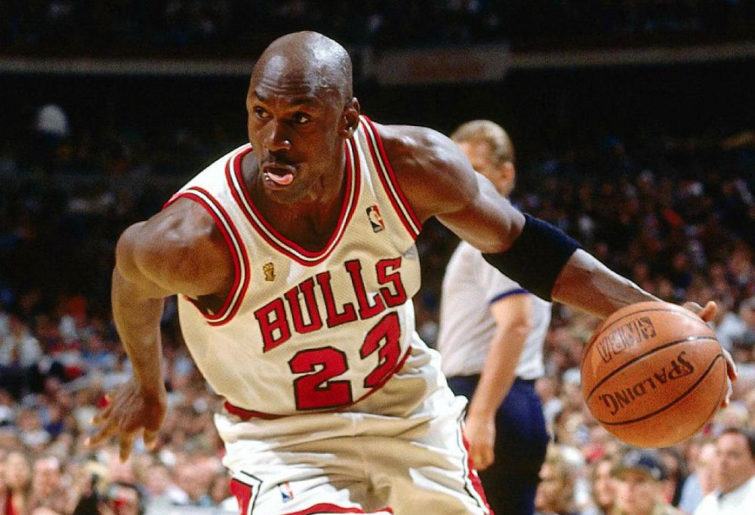LISTEN: Journalist under fire for 'gross... creepy' interaction with Caitlin Clark
https://twitter.com/KatieMox/status/1780695947481174464 https://twitter.com/CWilliamson44/status/1780696642917994703
Opinion
Imagine if you watched The Last Dance with a teenager and they said, “Dennis Rodman isn’t a Hall of Famer, he wouldn’t even start in the NBA today.” You would rightly throw them out the window for speaking such heresy.
Rodman was wildly successful and it’s dumb to compare him to standards of a different era. The same courtesy is rarely given to modern-day players however.
It is seemingly reserved for big men with post moves considered unlucky to have not played in an earlier decade (Al Jefferson, Greg Monroe, etc). A skinny shooter is dominating a game? Try that against the ‘Bad Boy’ Pistons.
A common battleground in the GOAT debate between LeBron James and Michael Jordan is that the league was harder back in MJ’s day. Not only was hand checking legal but if you managed to get by your defender there was a burly centre or power forward ready to take your head off with no concern for flagrant fouls or ejections.
If MJ could average 30 points per game back then, he’d score 50 in today’s league without breaking a sweat.

Can’t we just enjoy the greatness of today’s players without pointing out that MJ was better? (Image: Flickr/Jason H Smith CC-BY-2.0)
Yes, defences were much more physical back in the day, but they were also greatly hindered by the illegal defence rule which made double-teaming incredibly difficult.
Put simply, illegal defence rule meant that a defender either had to be guarding their man or the player with the ball, meaning driving lanes were wide open for premier scorers since defenders couldn’t sag off their man. In his book ‘Eleven Rings’, Phil Jackson wrote that one of the primary benefits of the triangle offence was that it promoted off-ball movement and teams couldn’t double or triple-team MJ when the ball wasn’t in his hands.
The removal of the illegal defence rule in 2001 was one of the biggest rule changes in NBA history. Defenders could now roam the court freely and clog driving lanes. Suddenly, isolation scoring (particularly in the low post) was much more difficult, which led to the traditional big man slowly being phased out of the game.
This also contributed to the three-point revolution, since sharpshooters could punish defenders for leaving their man.
If you want an idea of how Rodman would fare in today’s league, check out how the Golden State Warriors completely nullified Tony Allen in the 2015 Western Conference semi-finals. Despite starring in the first three games with his stellar defence, Allen struggled to play major minutes for the rest of the series as he was such a non-threat that the Warriors didn’t even guard him, leaving an extra defender to roam freely and disrupt the Grizzlies’ offence.
Rodman was also limited offensively, but teams couldn’t scheme him out of games the same way because the illegal defence rule forced his defender to stay close to him.
Which brings us back to the GOAT debate. Basketball before and after the illegal defence rule change are vastly different sports, so comparing players between different eras without nuance is a fool’s errand.
If we’re playing 1990s basketball, MJ is better than LeBron because he is a superior isolation scorer. If we’re playing modern basketball, LeBron is better than MJ because he is a much better (and more willing) passer of the ball to pick apart quasi-zone defences.
If MJ played in the modern NBA he would’ve had a similar career to Kobe Bryant, an all-time great who would often hurt his team because his natural scoring instinct and competitiveness would compel them to take highly contested, inefficient shots.